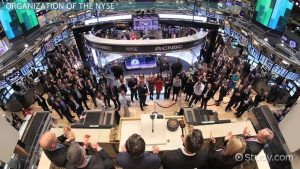Investing the stock market can be a volatile journey filled with many ups and downs. Even in a normal year, there can be a lot of worry and investor angst about market volatility and what it means for the investment landscape and long-term returns. However, volatility does not equal risk. Risk is the likelihood of losses relative to the expected return on an investment. More simply, risk is a measure of the level of uncertainty of achieving the return expected by the investor. Nowhere in that definition does volatility, either short or long-term, become a factor. Volatility is a measure of the dispersion of returns for a given security or market index. Volatility is often associated with big swings in either direction, but it is not by itself a negative thing.
It is possible to have high volatility with no increase in risk. For example, a Boeing airliner flies from Dallas to Boston. Due to changing weather patterns, the pilot is forced to move the plane up and down 2,000 feet every ten minutes. While this is not the most efficient way to fly and passengers may be a bit nauseated, the more volatile movement of the plane does not mean the flight is riskier, in imminent peril, or inherently more dangerous than a steady flight. Passengers who sleep through the flight will not even know the difference.
It is also possible to have no volatility but still assume tremendous risk. In skydiving, there is not much inherent risk of not going where you want to go. Either way, you will get there. It just depends on what kind of shape you want to be in when you arrive back on Earth. There is also not much volatility in your journey since you are going in the same direction the entire time. The overwhelming risk comes from whether the parachute opens or not. A skydiver endures tremendous risk with little or no volatility.
While the stock market may see periodic increases in volatility and sharp up or down movements, the market does not become riskier with a higher level of volatility. The risks to companies, stocks, and asset classes are present whether the market is currently worried about them or not. I may be white knuckled on that volatile flight I described earlier, but I am not nervous at all while driving to work. This is true even though my drive to work is much more dangerous than a commercial airline flight. Just because we perceive a risk, does not mean that it exists in ways that will harm us. Likewise, even if we ignore a risk does not mean it does not exist.
The average annualized return on the S&P 500 over the last ninety years is 9.8 percent. Although the market has averaged a 9.8 percent return over that long period, the market very rarely sees performance in the 5-10 percent range in a calendar year. In only six of the past ninety years has the market closed with a return in that range. Although the average return seems normal, the range of returns can be substantial. That’s just another reason to invest automatically on a regular basis and stay the course no matter what happens during a market year.
Market strategists are asked every December to predict the performance in the S&P 500 during the next calendar year. For the last ten years, the average prediction of the group is 8 percent, with a range each year of 7 percent to 10 percent. Guessing in that range seems like a very safe forecast to make as it matches the long-term return range of the market. However, the 0-10 percent range is the most historically unlikely range for actual performance. In the last ninety years, the S&P has only returned in the 0 percent to 10 percent range fifteen times, or 17 percent of all calendar years. Although betting on this range seems like an intelligent bet, it is not. A much more likely bet would be the 20 percent or more group (27 percent of the time), or the 10-20 percent group (24 percent of the time).
Although stock market performance can vary greatly year by year, it is actually very difficult to pick a month in the past, invest in the market, and then lose money over the next five years. Since D-Day in June 1944, there have been 893 months. If an investor invested money at the end of each of those months and held it for the next five years, then they lost money only 16 percent of the time over the succeeding five-year period. In fact, in only 8 percent of those periods did an investor see a loss for the five years of more than 10 percent.
It is very important to keep your focus on the long-term goal of growing wealth over time and to do so without being frightened or scared out of the market by temporary volatility. Investing in stocks has proven to be the best way to grow wealth over time and beat inflation, so learning to focus on the differences between volatility and risk is paramount to your long-term investing success.



